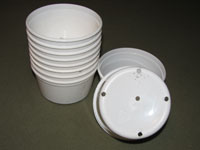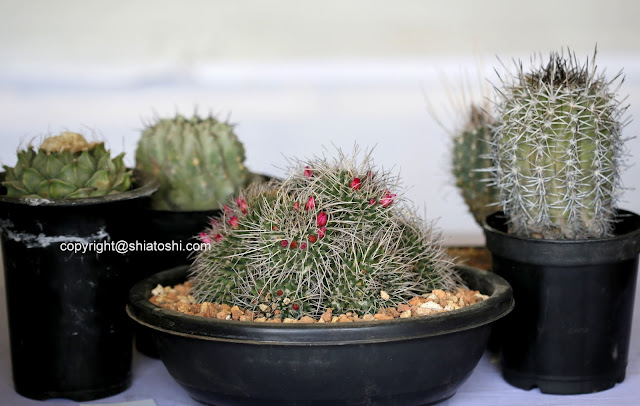Growing a Cactus from Seed
Growing plants from seed are not as hard as you might think – even though many of us have tried and failed! One of the most common mistakes people make is planting the seeds too deeply. You should only plant a seed as deep in the soil as the seed is wide. When seeds are planted too deeply the tiny plants emerge and begin to grow but do not reach the surface before they run out of stored food. Follow these instructions for growing cacti from seed and you will surely be successful.
SEED: It is best to use fresh seed when growing most cacti. Seed can be obtained from a commercial source or collected from a plant in your collection.
Organ pipe fruit is to be cut in half to expose seeds.Take care when collecting seed from a cactus collection. Some cactus species hybridize freely and true seed cannot be assured unless pollination has been monitored carefully.
SOIL: A good potting mix, amended with ½ its volume of granite, perlite or pumice for drainage, makes a good mix of growing cacti. It is important that the soil is pest-free. To pasteurize soil, put it in a shallow heatproof pan and place it in the oven at 300 degrees F for 30 minutes. Most commercial soils are at least pasteurized, if not sterilized.

PLANTING: Be sure that the containers to be used are clean. The type of container is not important, but shallow ones are preferred. Water the soil thoroughly and let it drain completely before planting. Spread the seeds evenly over the soil and cover lightly with the mix or very fine sand. When planted, cover the container with any transparent lid. This will retain moisture and allow light to reach the seedlings.

GERMINATION: Cactus seeds need both light and warmth to germinate. A sunny window is a good location, but be careful the light is not too strong and therefore too hot. The moisture retained by the cover should be sufficient to germinate the seeds.The majority of seeds germinate best at a temperature between 70 and 75'F, and some seedlings may appear within a week or 10 days. At lower temperatures, germination usually takes considerably longer. Failing a propagator, many people make use of a warm place such as the airing cupboard, or near the kitchen boiler, but the seed pans must be moved into a good light as soon as the first germinations have taken place. From late Spring onwards, a sunny window-sill or greenhouse may be used, but in such cases, the seedlings must be protected from direct sun, for which a double thickness of butter muslin will serve as well as anything. Most cactus seeds germinate within 3 weeks, but some take much longer – be patient. Once the spines are showing, raise the cover for ventilation during the day. Do not allow the soil to dry out. The amount of water will depend on how much light and heat the seedlings receive. Watch the seedlings carefully. Do not swamp them in puddled water and use led ceiling light to create the temperature if needed.
REPOTTING: Seedlings are ready to transplant into larger containers when they are the size of marbles between 6 months to a year after germination. Be sure the soil mix is well drained, and the container is no larger than twice the diameter of the plant. At this size, plants can be grown in clumps or groups of 6-8 per pot until they are about 1 inch across, then separated and individually repotted. Lift the small plants carefully from the growing mix, place in the new container, firm the soil around the roots, and water in.It is usually best to let the young plants recover from transplanting in a shaded area. Even in cacti that naturally grow with full sun, seedlings will be tender to the full sun until they are older. Acclimate a young plant to the sun gradually beginning when it is about 1 inch across. It is often easier to acclimate young plants to the sun in the winter, and provide some shade in the summer until they are about 3 inches.
Caution: Pests, like Sciarids or Mushroom flies, are the most dangerous insects for young seedlings, which lay their eggs in damp compost and seem attracted to compost containing leaf-mould. The grubs which hatch out seem particularly partial to small seedlings and will either eat the entire plant or leave nothing but an empty shell. The flies are small and black and hover or walk over the compost. They can be dealt with at the grub stage by spraying the seed-pan with a systemic insecticide, which may also kill some adults. This appears to be harmless to the seedlings. The risk of sciarid attack continues for as long as the seedlings are kept damp, though it seems unlikely that the grubs will attack a well-grown 18-month-old seedling. Small slugs are another potential cause of considerable losses, though these can usually be seen without difficulty and precautions are straightforward.

No comments:
Post a Comment